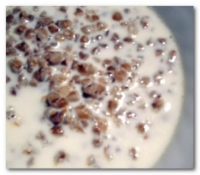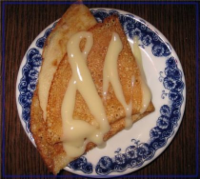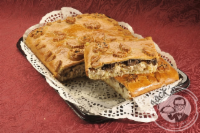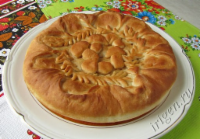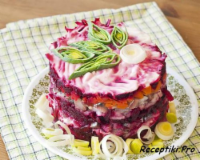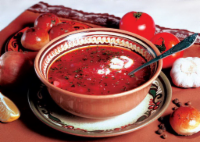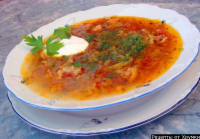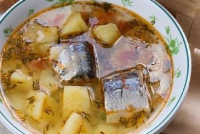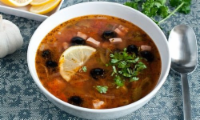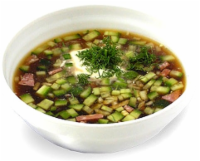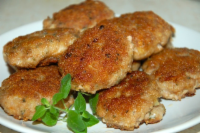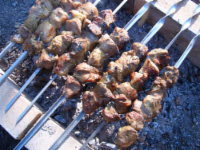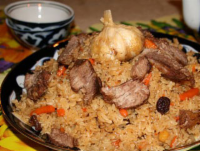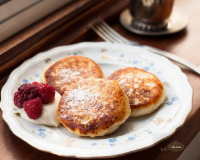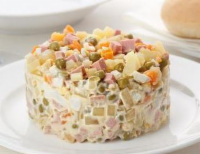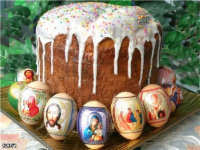Russian food and drink
Meet Sasha!
Sasha is 12 and lives in St. Petersburg. He’s a 6th-grader. His life is quite similar to yours: he goes to school, meets up with his friends, goes to the cinema. Quite obviously, he also needs to eat every day to have energy for all the exciting things he does throughout the day. And what does he usually eat?
However, before I introduce you to the wonders of Russian cuisine, let me show you some typical Russian ingredients. You might not be familiar with them, but they are present in many Russian recipes, so it would be good to get to know them first.
Sasha is 12 and lives in St. Petersburg. He’s a 6th-grader. His life is quite similar to yours: he goes to school, meets up with his friends, goes to the cinema. Quite obviously, he also needs to eat every day to have energy for all the exciting things he does throughout the day. And what does he usually eat?
However, before I introduce you to the wonders of Russian cuisine, let me show you some typical Russian ingredients. You might not be familiar with them, but they are present in many Russian recipes, so it would be good to get to know them first.
Common ingredients
tvarog (творог) - cottage (farmers) cheese
pickles (marinady / маринады) - in Russia you can find all sorts of pickled vegetables: cucumbers, cabbage,
mushrooms, bell peppers and even tomatoes
sgushonka (сгущёнка) - sweetened condensed milk. An essential ingredient in many Russian desserts, but also eaten on its own. Can be found in any Russian fridge.
smetana (сметана) - something between sour cream and creme fraiche served with many savoury dishes, sometimes replaced with mayonnaise
kvass (квас) - traditional Russian fizzy drink, made of rye bread. You can call it a Russian Coca-Cola
tvarog (творог) - cottage (farmers) cheese
pickles (marinady / маринады) - in Russia you can find all sorts of pickled vegetables: cucumbers, cabbage,
mushrooms, bell peppers and even tomatoes
sgushonka (сгущёнка) - sweetened condensed milk. An essential ingredient in many Russian desserts, but also eaten on its own. Can be found in any Russian fridge.
smetana (сметана) - something between sour cream and creme fraiche served with many savoury dishes, sometimes replaced with mayonnaise
kvass (квас) - traditional Russian fizzy drink, made of rye bread. You can call it a Russian Coca-Cola
Breakfast (zavtrak / завтрак)
|
For breakfast Sasha can have bread or cereal, but sometimes he feels like a Russian porridge called grechka s molokom. It is buckweed porridge, usually cooked in water and served with hot or cold milk and a little sugar. Buckweed porridge is not only a breakfast dish. It sometimes replaces potatoes in the main course (without milk of course!)
|
Lunch or supper (lanch / ланч, oozhin / ужин)
There are a few Russian dishes that Sasha eats for lunch (at midday) or supper (in the evening).
|
Bliny / блины. Bliny are Russian pancakes. They can be both sweet (served with sgushonka, tvarog, chocolate, fruit or jam) and savoury (filled with meat, cheese or vegetables in different combinations). Bliny are extremely popular in Russia. In fact, there are whole cafes that specialise only in bliny.
|
|
A pirog (or small pirozhki) consists of two layers of pastry filled with various things: fried cabbage, chicken, potatoes, minced meat, chopped meat fried with onions, vegetables, and so on. Just like bliny, pirozhki also have their sweet version. Sweet pirozhki are filled with fresh fruit coated in sugar or simply some jam. The top layer of can be decorated with very elaborate structures of pastry.
|
Dinner / obed / обед
This is Sasha's main meal. Winter in Russia can be very cold so there is no better way to warm yourself up than a bowl of soup. This is why there are a lot of soups in Russian cuisine. These are the most popular:
|
Shchi - cabbage soup / щи. Apart from cabbage, shchi is made of carrots, parsnips, celery, onions, garlic and pepper. It can also contain some meat. Just like borshch, it is served with sour cream and dill. Another version of this soup, called “sour shchi” (kisloe shchi) is made with pickled cabbage.
|
|
Solyanka / солянка. A sour and salty soup. It contains some ingredients that are not typical for Russia, like olives and capers, and some ingredients that are very Russian, like pickled cucumbers and pickled mushrooms. One of its most important ingredients is ham - this is where the salty flavour of the soup comes from.
|
Even though Russia is very cold in winter, it is also very hot in the summer. This is why Russians have invented a cold soup to cool them down on warm days:
Apart from soups, in Russian cuisine you can also find a rich choice of main courses:
Dessert / Десерт
Holidays
Holidays
And here is a traditional Russian Easter dessert:
Now it’s your turn!
Now it is time for you to cook! Let us prepare a two-course Russian dinner. Remember that cooking can sometimes be dangerous, so you will need a grown-up to supervise you!
Recipes
Borshch
To cook borshch you will need:
1.5 l of vegetable, chicken or beef stock (it’s best if you make it yourself!)
½ of a cabbage,
4 or 5 beetroots,
10 mushrooms,
1 red or yellow pepper,
1 or 2 potatoes
1 carrot,
1 can of beans,
1 can of tomatoes
1 big bay leaf,
2 cloves of garlic
1-2 tablespoons of vinegar
1 small teaspoon of sugar
salt and pepper,
dill and sour cream (you can find Russian-style sour cream in Polish shops and in the Polish sections in supermarkets).
Instructions
1. Shred the cabbage.
2. Grate the beetroots and the carrot (remember that beetroots can stain your hands. Use rubber gloves to avoid that).
3. Chop the peppers, mushrooms and potatoes
4. Drain the beans.
5. Put the chicken stock in a big pot and warm it up (you don’t need to boil it).
6. Put all the vegetables, beans, canned tomatoes and bay leaf, in the pot and let it simmer on small heat for around 45 minutes.
7. Add garlic, sugar, vinegar, salt and pepper to taste.
8. In the meantime, chop the dill.
9. When the soup is ready pour it into bowls, add a tablespoon of sour cream in each bowl. Sprinkle the soup with chopped dill.
10. Your home-made borsh is ready to be served!
To cook borshch you will need:
1.5 l of vegetable, chicken or beef stock (it’s best if you make it yourself!)
½ of a cabbage,
4 or 5 beetroots,
10 mushrooms,
1 red or yellow pepper,
1 or 2 potatoes
1 carrot,
1 can of beans,
1 can of tomatoes
1 big bay leaf,
2 cloves of garlic
1-2 tablespoons of vinegar
1 small teaspoon of sugar
salt and pepper,
dill and sour cream (you can find Russian-style sour cream in Polish shops and in the Polish sections in supermarkets).
Instructions
1. Shred the cabbage.
2. Grate the beetroots and the carrot (remember that beetroots can stain your hands. Use rubber gloves to avoid that).
3. Chop the peppers, mushrooms and potatoes
4. Drain the beans.
5. Put the chicken stock in a big pot and warm it up (you don’t need to boil it).
6. Put all the vegetables, beans, canned tomatoes and bay leaf, in the pot and let it simmer on small heat for around 45 minutes.
7. Add garlic, sugar, vinegar, salt and pepper to taste.
8. In the meantime, chop the dill.
9. When the soup is ready pour it into bowls, add a tablespoon of sour cream in each bowl. Sprinkle the soup with chopped dill.
10. Your home-made borsh is ready to be served!
Kotlyety
Time for the main course! We will prepare kotlyety. You can serve them with potato puree and pickled cucumbers.
To prepare kotlyety you will need:
1 kg of minced meat (½ kg of pork and ½ beef)
1 white breakfast roll or ½ white French baguette (doesn’t need to be fresh. It’s a great way to use the leftovers!)
1 glass of milk
1 big or 2 small onions
2 cloves of garlic
chopped dill
1 large egg
salt and pepper
dried bread crumbs
vegetable oil
Instructions
1. Soak the roll or the baguette in milk.
2. Finely chop the onion.
3. Fry the onion golden brown.
4. Peel and crush the garlic
5. Put meat, egg, garlic, fried onion, chopped dill, soaked roll, salt and pepper in a big bowl.
6. Combine everything until nice and smooth.
7. Form little oval-shaped kotlyety and press them gently to make them flat (each kotlyeta should consist of two to three tablespoons of the mass
8. Cover each kotlyeta in bread crumbs.
9. Fry in vegetable oil on medium heat until crispy and brown (approximately 5-7 minutes on each side).
10. Congratulations! Your kotlyety are ready to be served!
Time for the main course! We will prepare kotlyety. You can serve them with potato puree and pickled cucumbers.
To prepare kotlyety you will need:
1 kg of minced meat (½ kg of pork and ½ beef)
1 white breakfast roll or ½ white French baguette (doesn’t need to be fresh. It’s a great way to use the leftovers!)
1 glass of milk
1 big or 2 small onions
2 cloves of garlic
chopped dill
1 large egg
salt and pepper
dried bread crumbs
vegetable oil
Instructions
1. Soak the roll or the baguette in milk.
2. Finely chop the onion.
3. Fry the onion golden brown.
4. Peel and crush the garlic
5. Put meat, egg, garlic, fried onion, chopped dill, soaked roll, salt and pepper in a big bowl.
6. Combine everything until nice and smooth.
7. Form little oval-shaped kotlyety and press them gently to make them flat (each kotlyeta should consist of two to three tablespoons of the mass
8. Cover each kotlyeta in bread crumbs.
9. Fry in vegetable oil on medium heat until crispy and brown (approximately 5-7 minutes on each side).
10. Congratulations! Your kotlyety are ready to be served!
